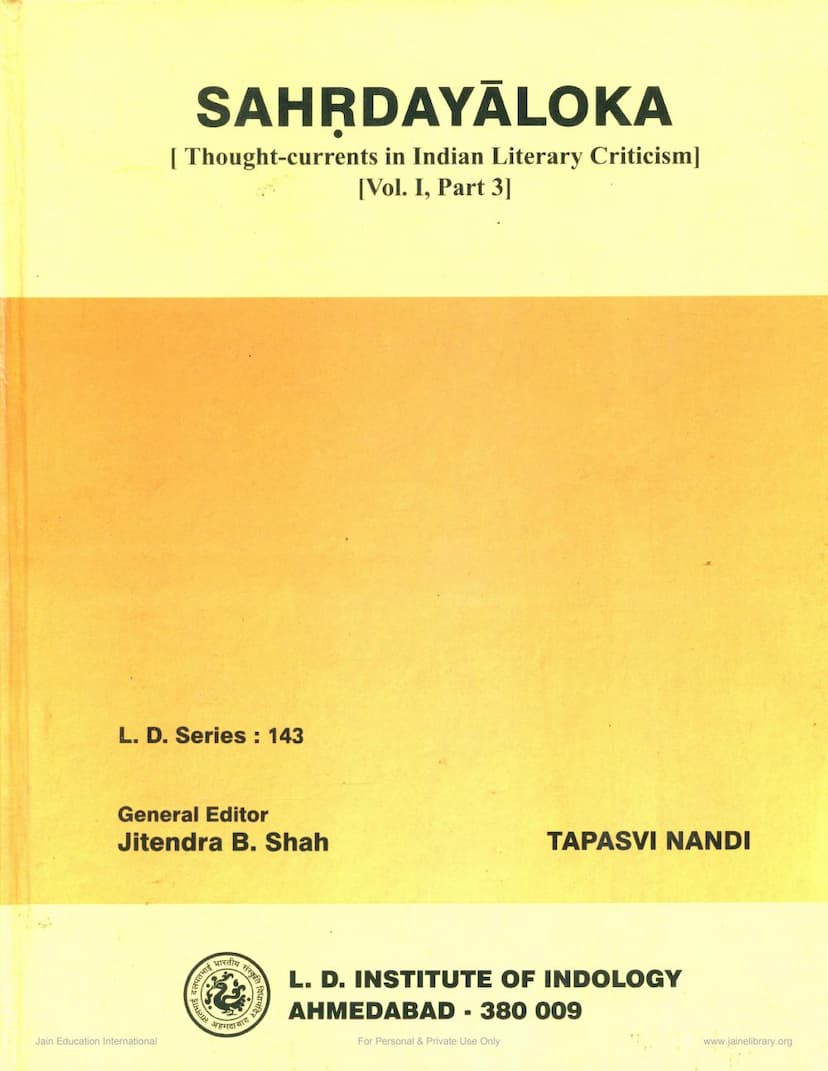Sahrdayaloka Part 03
Added to library: September 2, 2025
Loading image...

Summary
The book "Sahrdayaloka Part 03" by Tapasvi Nandi, published by L. D. Institute of Indology, Ahmedabad, is the third part of a larger work on Indian literary criticism. This particular volume focuses on the thought-currents prevalent in Sanskrit literary criticism, specifically exploring the concepts of Dhvani and Rasa.
Key Themes and Content:
- Comprehensive Overview of Indian Literary Criticism: The book aims to cover the fundamental ideas in Sanskrit literary criticism, tracing the origins and development of key topics.
- Focus on Dhvani and Rasa: A central theme is the exploration of Dhvani (suggested meaning) and Rasa (aesthetic experience/sentiment), considered cornerstones of Indian literary aesthetics.
- Historical and Critical Perspective: The author presents the material in a historical, critical, and comparative manner, acknowledging the views of predecessors while also engaging in discussions and differences of opinion where applicable.
- Relevance to Modern Literature: Professor Nandi particularly emphasizes the contemporary relevance and applicability of Indian aesthetic concepts like Dhvani and Rasa to modern literary patterns, including absurd poetry and theatre.
- Detailed Analysis of Key Concepts: The book delves into specific theoretical concepts within Indian poetics, including:
- Definition and scope of poetry.
- Powers of a word (Śabda-vyāpāra-vicara) and its various functions (Abhidhā, Tātparya, Lakṣaṇā, Vyañjanā).
- The theory of Dhvani, its classification, and its presence in the works of various critics like Kuntaka and Bhoja.
- The concept of Rasa, tracing its origins from the Vedas and early literature through major Alamkarikas like Bharata, Bhāmaha, Dandin, Vamana, Rudrata, Anandavardhana, Abhinavagupta, Mammata, and Jagannatha.
- Detailed discussion on Rasa-niṣpatti (realization of Rasa) and its various interpretations, particularly focusing on Abhinavagupta's influential views.
- Analysis of dramatic elements like Daśa-rupaka (ten types of drama).
- Acknowledgment of Influences: The author expresses gratitude to his predecessors and contemporary scholars whose works have shaped his research, highlighting the monumental contributions of figures like Dr. P. V. Kane, Dr. S. K. De, and Dr. V. Raghavan.
- Publisher's Note and Author's Preface: The publisher's note commends the author's effort in explaining the relevance of Indian aesthetics to modern literature. The author's preface, "Namaskaromi," expresses gratitude and reflects on the spiritual endeavor behind the work.
- Structure of the Work: The overall work, "Sahrdayāloka," is presented in three parts. Part III, this volume, covers chapters XIV to XVIII, along with a select bibliography.
In essence, "Sahrdayāloka Part 03" is a scholarly exploration of the core principles of Indian literary criticism, with a particular emphasis on the enduring significance of Dhvani and Rasa, and their applicability even in the context of contemporary artistic expressions.